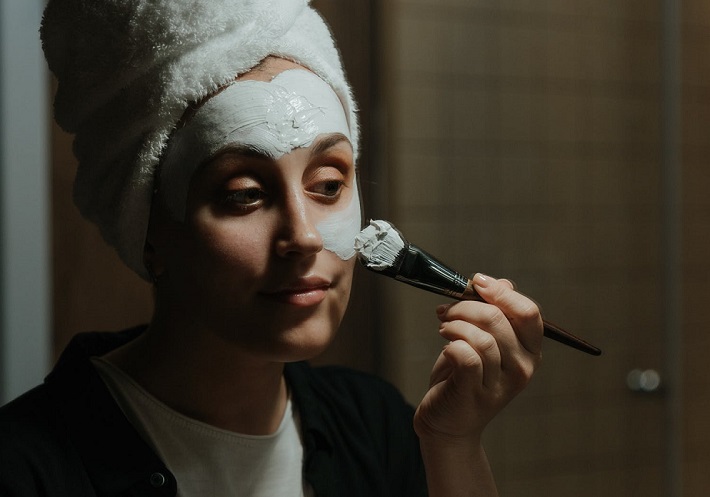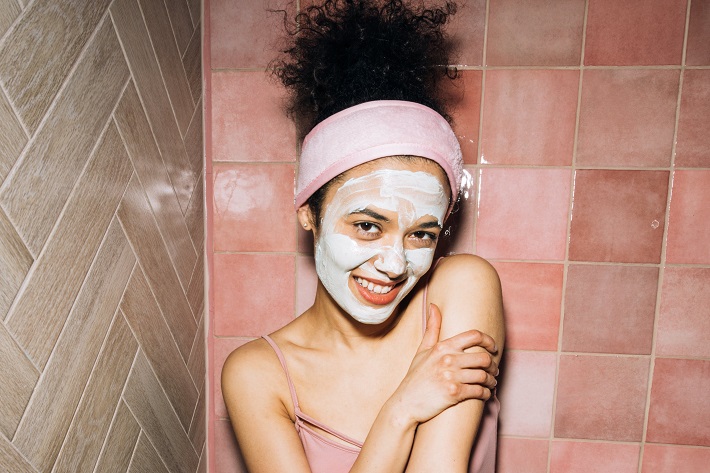If you are into skincare, then you know that there are a number of things you can do to enhance your natural beauty. Using a skin hydrating mask is one of them.
When it comes to skincare, your priority should be daily cleansing moisturizing and protecting your skin. However, there is nothing quite like a hydrating face mask to give your skin that glow. The right mask can also tackle key skin concerns and conditions, from dryness and dehydration to large pores and acne.
Just like a moisturiser or serum, a face mask delivers high concentrated actives, vitamins and nutrients to the skin to improves its overall health. What makes it different is that a face mask is occlusive. This means that it creates a physical barrier that locks in beneficial ingredients, allowing them to absorb more efficiently. Depending on what your skin needs are, there is a mask that can hydrate and moisturise dry skin, refine large pores, absorb excess oil and dirt, improve skin texture, decongest clogged pores, enhance elasticity, brighten dark spots, improve the look of breakouts and even minimize the appearance of fine line and wrinkles.
Types of Hydrating Face Masks

There are several types of hydrating masks available on the market, each has specific properties and is meant for a different skin type.
Cream Masks
A cream-based mask has a similar texture to a rich moisturiser. What’s more, cream hydrating masks moisturize and hydrate your skin, helping it remain plump and healthy. Most cream-based masks can be used as a leave-in treatment to replenish and smoothen dry, dehydrated or aging skin overnight.
Gel Masks
These masks have the consistency of jam or jelly. Due to their lightweight texture, they are a great choice for normal to oily skin types. Many gels masks include astringent ingredients (such as blackberries and raspberries), in their composition, which helps minimize oil and tighten pores. Others feature soothing and hydrating ingredients like honey, which replenish dry and dehydrated skin. No matter which gel mask you choose, you can improve your results with this skincare tip from the experts: apply your gel-based mask before hopping in the shower to make it an active in-shower treatment.
Clay Masks

Clay masks can do wonders for acne-prone skin. Thanks to its astringent, exfoliating, and absorbent properties, clay has the ability to target the root causes of acne and treat ongoing symptoms such as excess oil and inflammation. Even best, a clay mask can double as a spot treatment. You can use it to spot treat bumpy and congested skin.
Stimulating Masks
Masks that contain active spices like cinnamon and paprika stimulate circulation and oxygenate the skin. The great thing about these masks is that they work instantly – they boost circulation, causing the skin to tingle intensely and turn bright red. Just like stimulating your body’s circulation is a benefit of exercising, boosting the circulation in your face promotes your skin’s health as well. However, these masks aren’t for everyone. If you have sensitive skin, a cream or gel-based skin may be a better option for you, as these masks won’t exacerbate your symptoms.
Exfoliating Masks
These masks are formulated to remove dead skin cells and enhance the skin natural turnover process. Exfoliating masks may take the form of a peel which includes alpha hydroxy or beta hydroxy acids to dissolve dead skin cells and clear them from the skin’s surface. They may also use finely ground particles like maize flour to gently fuff and polish your complexion.
How to Use Hydrating Mask

If you don’t want to worry about making a mess all around the house, apply your face mask while relaxing in the tub. You can apply the mask to your face, neck and throat and relax. If you don’t have time for a bath, just take the time to pull your hair back so it doesn’t touch your face. Make sure you wear clothes that don’t cover your neck area so that you don’t get the product on your clothes.
Before you apply the mask, your face should be freshly cleaned. Use your daily cleanser to remove all of the surface dirt, makeup and oils before applying your mask. This will help you reap all the benefits your face mask was designed to deliver. You should look like you’re wearing a mask when you put it on, so don’t rub the mask directly into your skin. Also, avoid the eye area, keep your nostrils clear and extend the mask from your face down your neck and throat.
Leave the mask on for about 10 to 20 minutes. You can use this time to relax, check your mail or do whatever you want. Just be conscientious of the time and follow the directions on the label. When it comes to how often should you use a hydrating mask, it can be once a week or up to three times a week depending on your skin type. If you have normal to dry skin, you should use it less, but if you have normal to oily skin you can use it more often.



